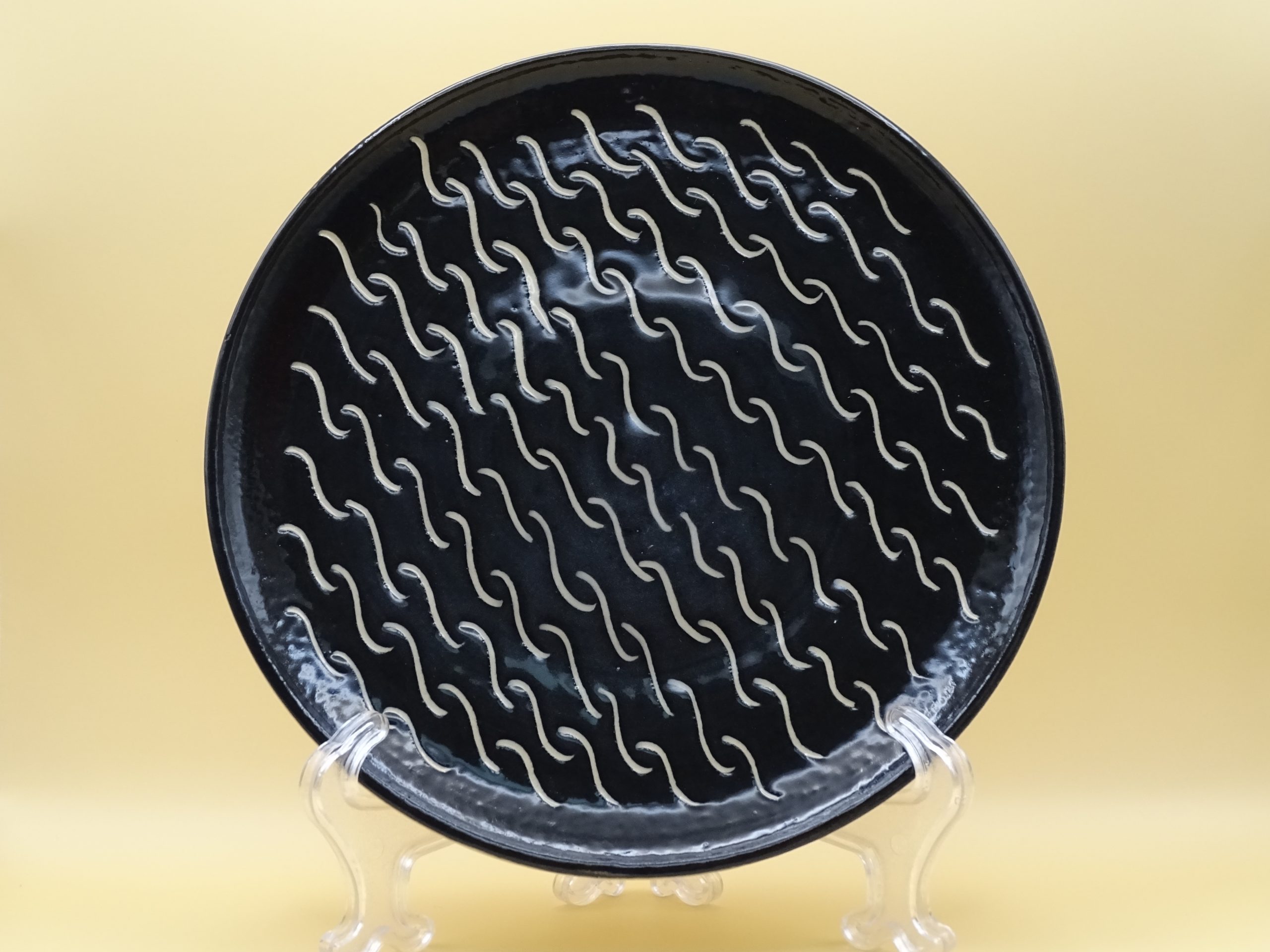
This stoneware plate is covered with black slip (liquid clay), left to dry for a while before the design is carved out with a sharp too. This is called sgraffito.
It has been glazed and the plate is both dishwasher and microwave proof.

This stoneware plate is covered with black slip (liquid clay), left to dry for a while before the design is carved out with a sharp too. This is called sgraffito.
It has been glazed and the plate is both dishwasher and microwave proof.
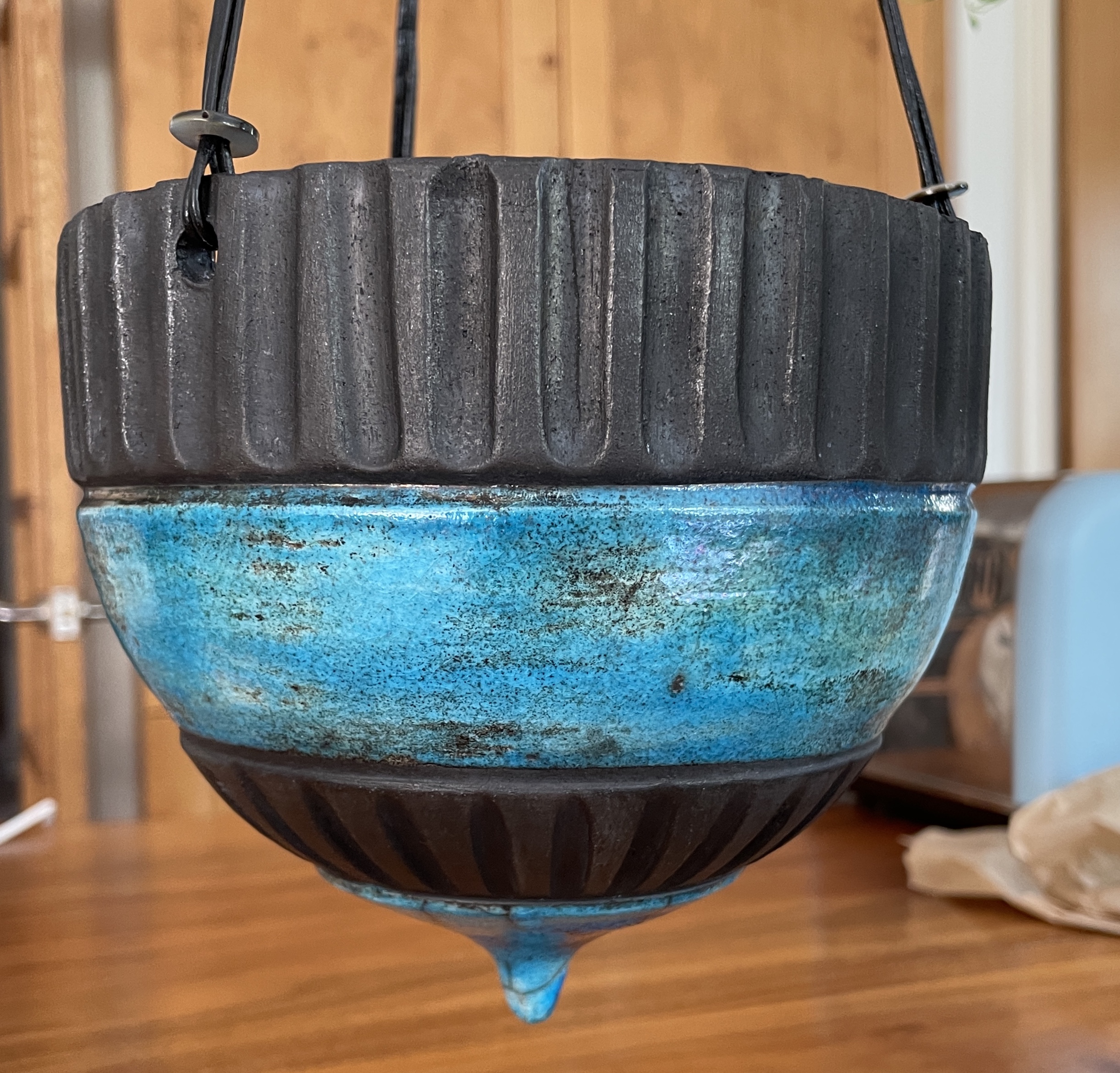
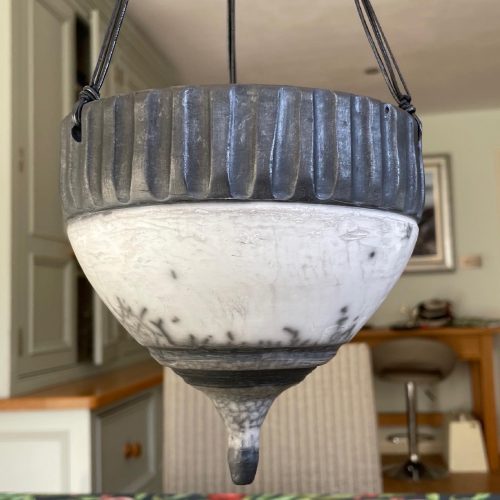
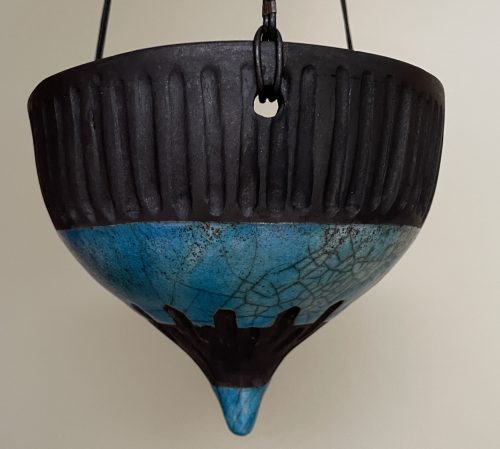 Unique raku planters. Made from stoneware clay and raku-fired with a copper based glaze, this planter is strung with leather thong.
Unique raku planters. Made from stoneware clay and raku-fired with a copper based glaze, this planter is strung with leather thong.
Ideal for conservatories or a summer patio feature.
Raku originates in Japan where it was part of the tea ceremony. It was modified in 1950’s America and UK. Once fired pots (biscuit ware) are coated in glaze, heated to around 800 degrees C, and, when at this temperature the pots are plunged into a bin of combustible material such as sawdust.
Parts of the pots which have no covering of glaze absorb the smoke and become matt black. The pots are then sealed with a special polish.The glaze on this hanging pot contains copper, which is turquoise but under reduction conditions some may become copper coloured.
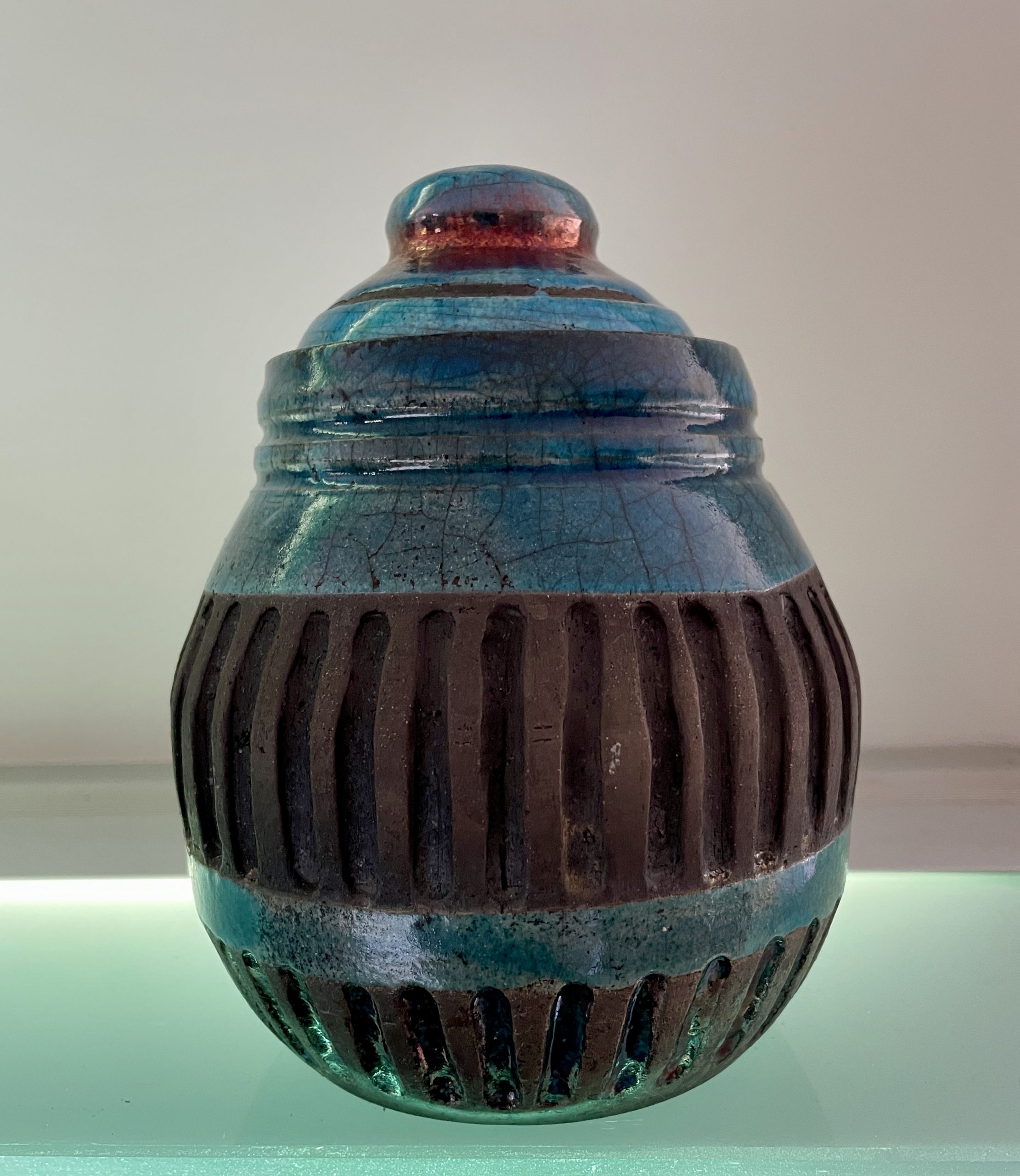
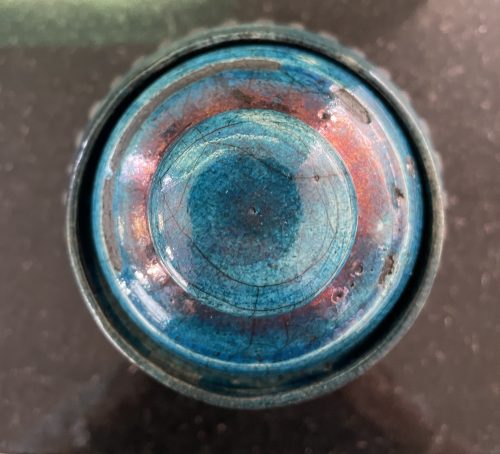 Raku firing produces unique unpredictable, and beautiful effects.
Raku firing produces unique unpredictable, and beautiful effects.
Raku originates in Japan where it was part of the tea ceremony. It was modified in 1950’s America and UK. Once fired pots (biscuit ware) are coated in glaze, heated to around 800 degrees C, and, when at this temperature the pots are plunged into a bin of combustible material such as sawdust.
Parts of the pots which have no covering of glaze absorb the smoke and become matt black. The pots are then sealed with a special polish.The glaze on this pot contains copper, which is turquoise
but under reduction conditions some may become copper coloured.
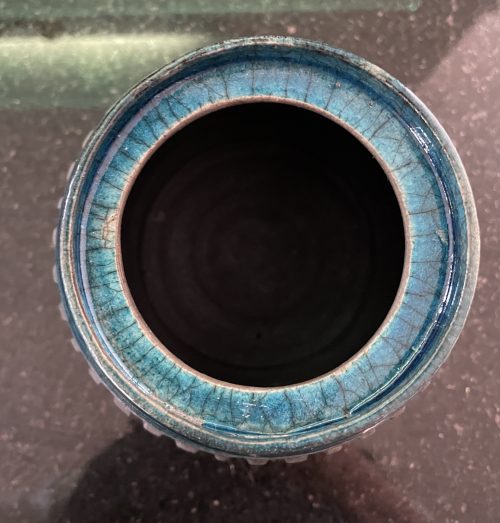

A completely unique hand thrown naked raku bottle which was carved before firing.
Raku firing produces unique unpredictable, and beautiful effects.
Raku originates in Japan where it was part of the tea ceremony. It was modified in 1950’s America and UK. Once fired pots (biscuit ware) are coated in glaze, heated to around 800 degrees C, and, when at this temperature the pots are plunged into a bin of combustible material such as sawdust. The smoke penetrates the clay, leaving the black colour where there is no glaze. On removal the glaze has little cracks over it, which enhance the beauty of the work. 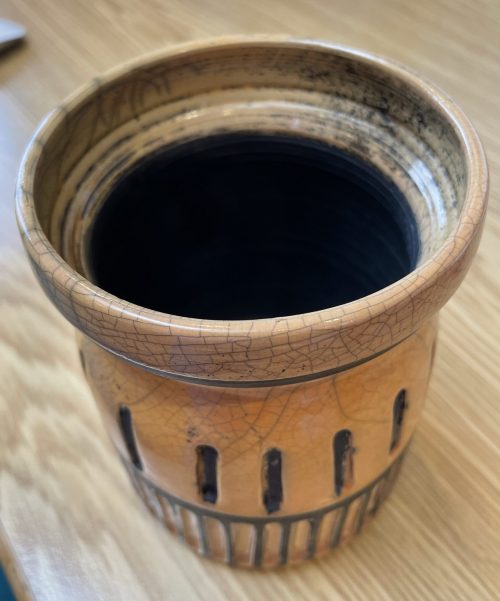
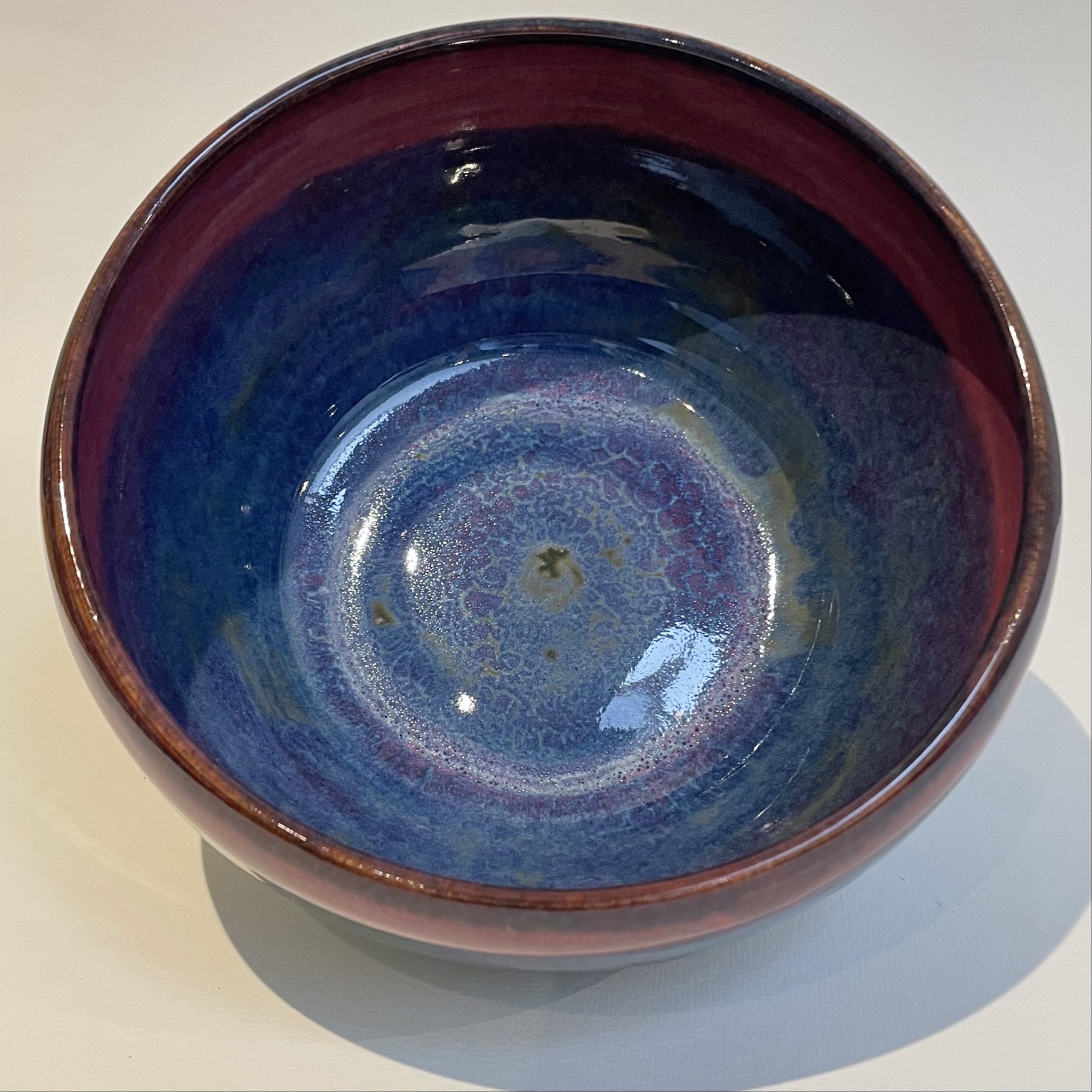
A beautiful pink rimmed blue and purple handmade ceramic bowl which is totally unique.
The bowl is 16cm in diameter and 7cm tall.
It’s suitable for fruit or a salad, or just for display.
It has been thrown from stoneware clay, and fired to 1000 degrees celcius before being decorated and glazed. It was then gloss fired to over 1200 degrees.
Its made from stoneware clay and is suitable for hand or dishwashing, and can be used in the microwave.
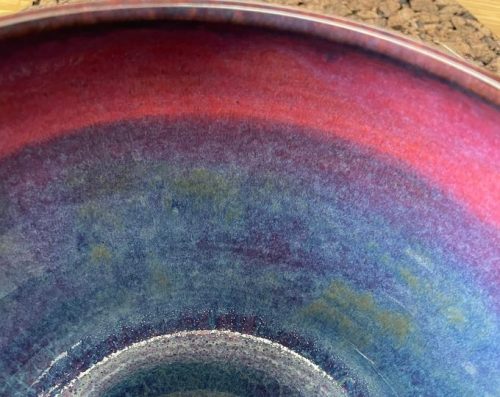
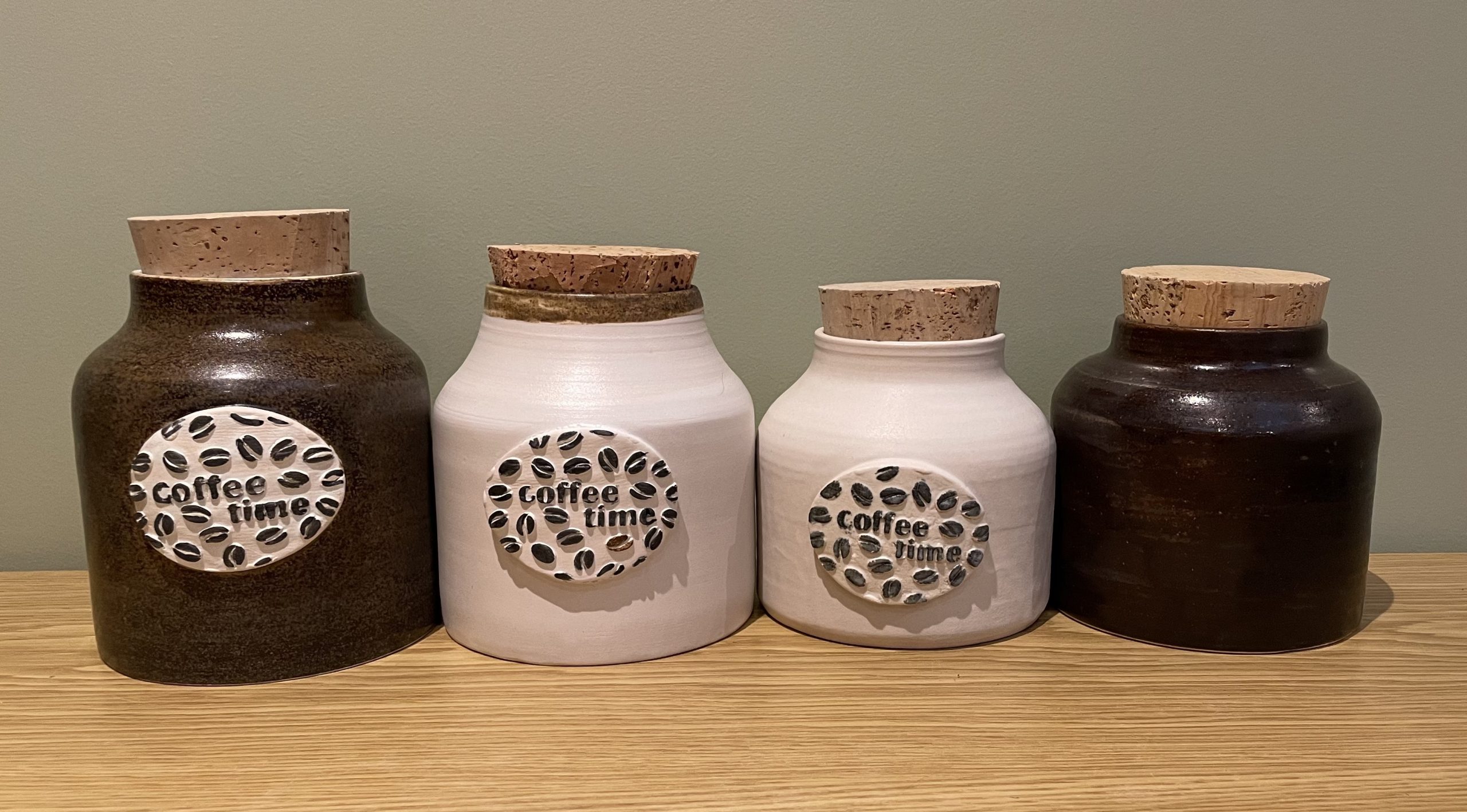
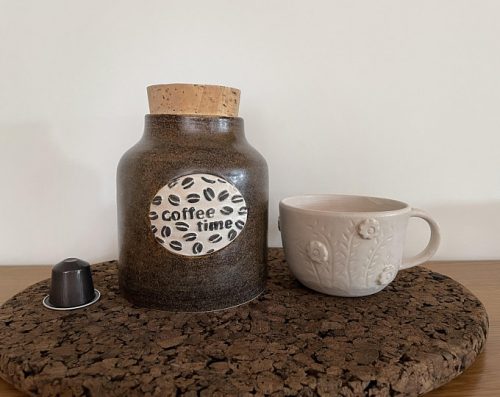 Coffee storage jars made from stoneware clay with cork stopper.
Coffee storage jars made from stoneware clay with cork stopper.
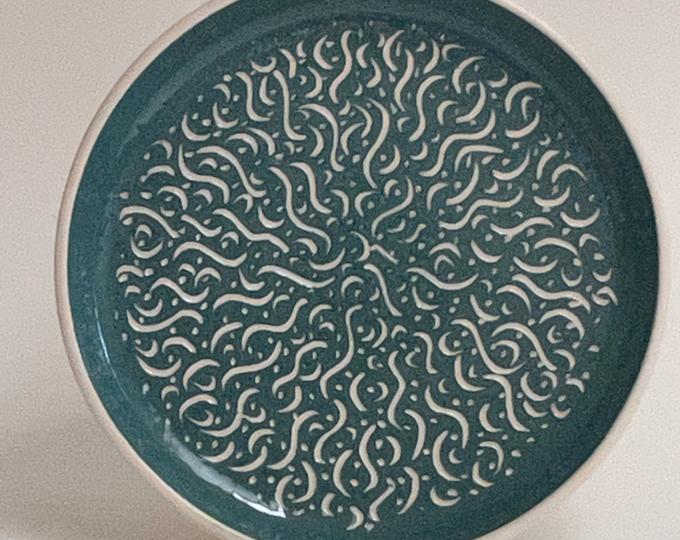
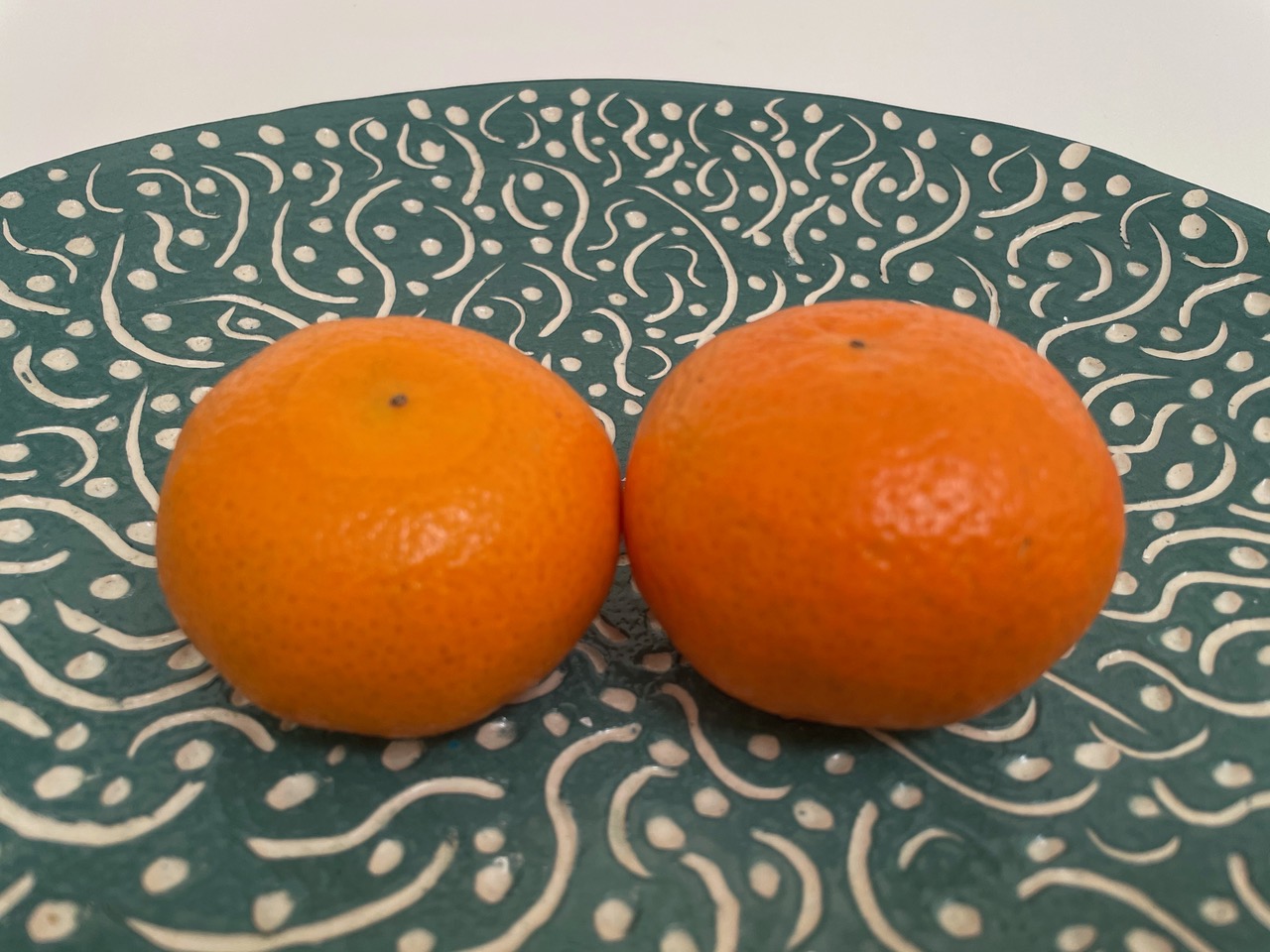
A slip carved plate, turquoise in colour.
The plate has been thrown in white earthenware clay and has a shiny glaze.
Earthenware is a traditional clay for dinnerware, and can be used in the dishwasher, but is not good for use in a microwave oven.
The design is carved out randomly and each plate is unique.
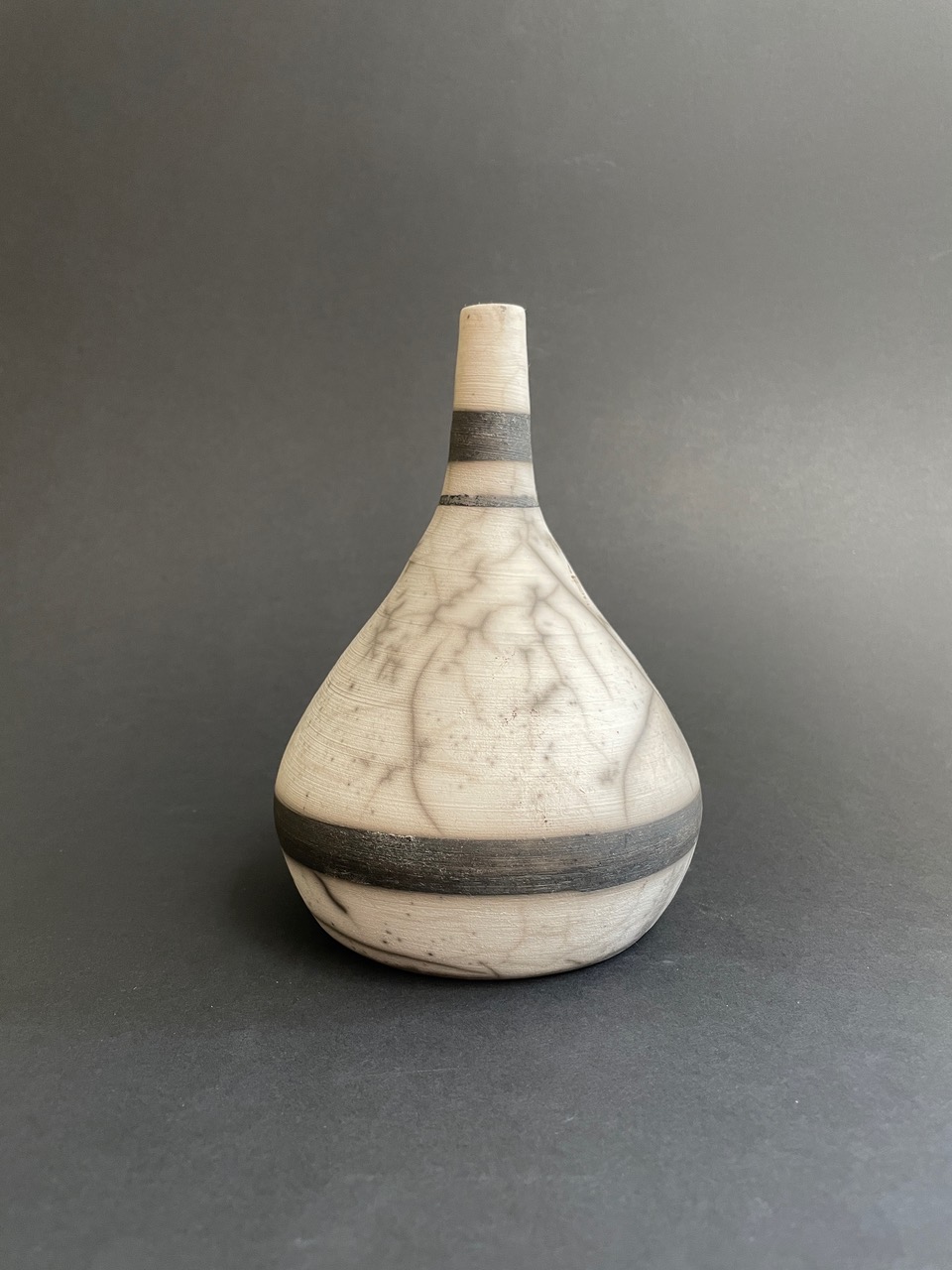
A 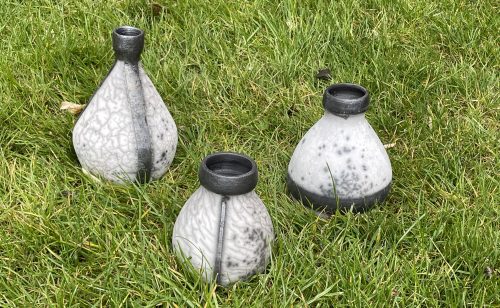 completely unique hand thrown naked raku bottle which makes an excellent gift. These are ornamental pieces as they are porous, and not food safe.
completely unique hand thrown naked raku bottle which makes an excellent gift. These are ornamental pieces as they are porous, and not food safe.
Raku firing produces unique unpredictable, and beautiful effects.
Raku originates in Japan where it was part of the tea ceremony. It was modified in 1950’s America and UK. Once fired pots (biscuit ware) are coated in a slip (liquid clay) and a glaze, heated to around 700-800 degrees C, and, when at this temperature the pots are plunged into a bin of combustible material such as sawdust.
For naked raku, when the pots are removed from the bin, the slip and glaze crackles off, leaving unpredictable patterns. Some people plunge the pots into water to enhance this process. Parts of the pots which have no covering of slip and glaze absorb the smoke and become matt black. The other parts are white with crackles. The pots are then sealed with a special polish.
Each pot is unique and the result of raku firing can be very exciting and beautiful or rather disappointing, and thus pieces tend to be more expensive than regular pottery.
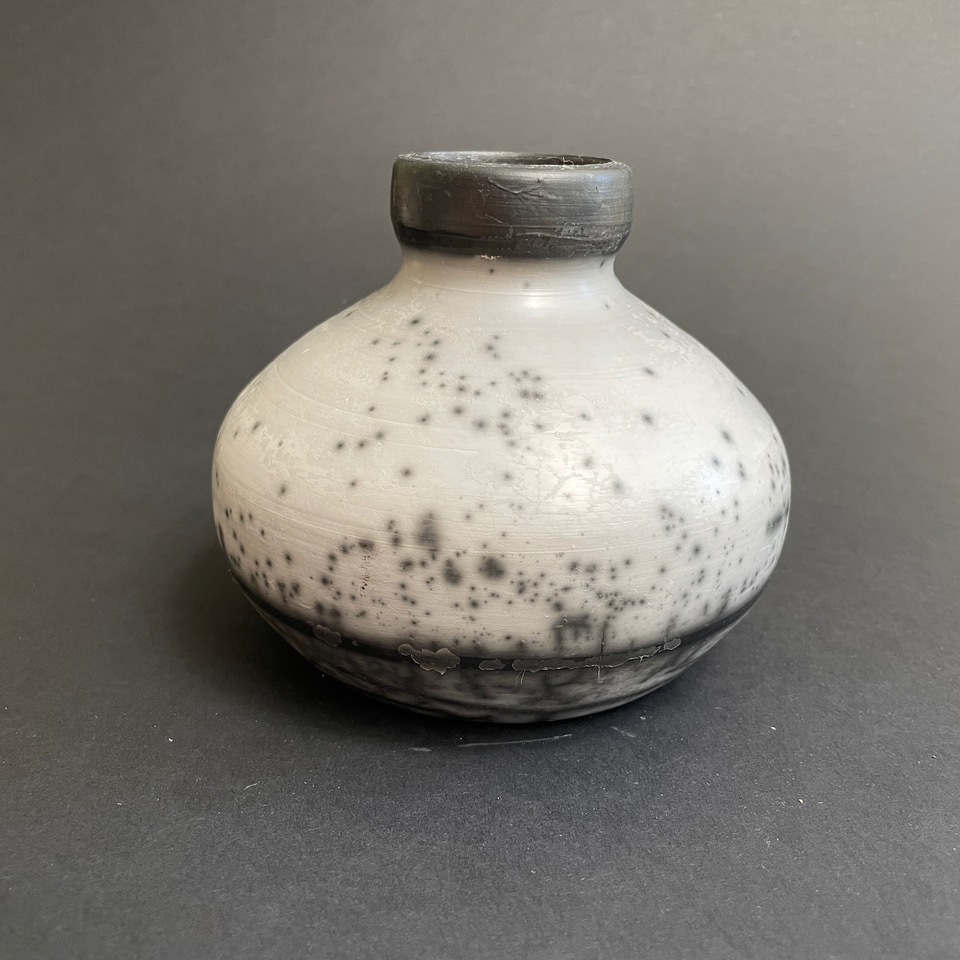
A completely unique hand thrown naked raku bottle which makes an excellent gift. These are ornamental pieces as they are porous, and not food safe.
Raku firing produces unique unpredictable, and beautiful effects.
Raku originates in Japan where it was part of the tea ceremony. It was modified in 1950’s America and UK. Once fired pots (biscuit ware) are coated in a slip (liquid clay) and a glaze, heated to around 700-800 degrees C, and, when at this temperature the pots are plunged into a bin of combustible material such as sawdust.
 For naked raku, when the pots are removed from the bin, the slip and glaze crackles off, leaving unpredictable patterns. Some people plunge the pots into water to enhance this process. Parts of the pots which have no covering of slip and glaze absorb the smoke and become matt black. The other parts are white with crackles. The pots are then sealed with a special polish.
For naked raku, when the pots are removed from the bin, the slip and glaze crackles off, leaving unpredictable patterns. Some people plunge the pots into water to enhance this process. Parts of the pots which have no covering of slip and glaze absorb the smoke and become matt black. The other parts are white with crackles. The pots are then sealed with a special polish.
Each pot is unique and the result of raku firing can be very exciting and beautiful or rather disappointing, and thus pieces tend to be more expensive than regular pottery.